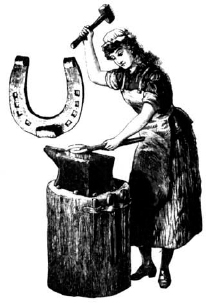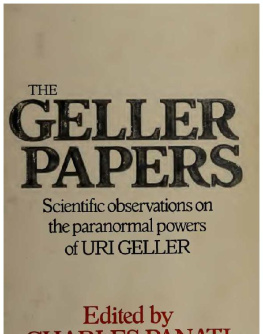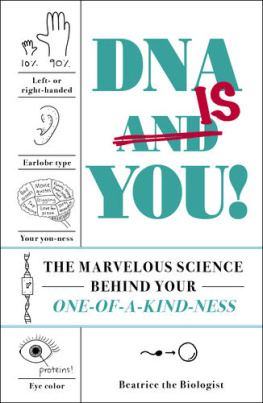Charles Panati - Extraordinary Origins of Everyday Things
Here you can read online Charles Panati - Extraordinary Origins of Everyday Things full text of the book (entire story) in english for free. Download pdf and epub, get meaning, cover and reviews about this ebook. year: 1989, publisher: William Morrow Paperbacks, genre: Religion. Description of the work, (preface) as well as reviews are available. Best literature library LitArk.com created for fans of good reading and offers a wide selection of genres:
Romance novel
Science fiction
Adventure
Detective
Science
History
Home and family
Prose
Art
Politics
Computer
Non-fiction
Religion
Business
Children
Humor
Choose a favorite category and find really read worthwhile books. Enjoy immersion in the world of imagination, feel the emotions of the characters or learn something new for yourself, make an fascinating discovery.
- Book:Extraordinary Origins of Everyday Things
- Author:
- Publisher:William Morrow Paperbacks
- Genre:
- Year:1989
- Rating:3 / 5
- Favourites:Add to favourites
- Your mark:
- 60
- 1
- 2
- 3
- 4
- 5
Extraordinary Origins of Everyday Things: summary, description and annotation
We offer to read an annotation, description, summary or preface (depends on what the author of the book "Extraordinary Origins of Everyday Things" wrote himself). If you haven't found the necessary information about the book — write in the comments, we will try to find it.
For lovers of facts, students of popular culture, history buffs, and science enthusiasts, the fascinating stories behind 500 everyday items, expressions, and customs--from Kleenex to steak sauce, Barbie Dolls to honeymoons.
Extraordinary Origins of Everyday Things — read online for free the complete book (whole text) full work
Below is the text of the book, divided by pages. System saving the place of the last page read, allows you to conveniently read the book "Extraordinary Origins of Everyday Things" online for free, without having to search again every time where you left off. Put a bookmark, and you can go to the page where you finished reading at any time.
Font size:
Interval:
Bookmark:
Napoleon feared black cats; Socrates the evil eye. Julius Caesar dreaded dreams. Henry VIII claimed witchcraft trapped him into a marriage with Anne Boleyn. Peter the Great suffered a pathological terror of crossing bridges. Samuel Johnson entered and exited a building with his right foot foremost.
Bad-luck superstitions still keep many people from walking under a ladder, opening an umbrella indoors, or boarding an airplane on Friday the thirteenth. On the other hand, these same people, hoping for good luck, might cross their fingers or, knock wood.
Superstitious beliefs, given their irrational nature, should have receded with the arrival of education and the advent of science. Yet even today, when objective evidence is valued highly, few people, if pressed, would not admit to secretly cherishing one, or two, or many superstitions. Across America, tens of thousands of lottery tickets are penciled in every day based on nothing more or less than peoples lucky numbers.
Perhaps this is how it should be, for superstitions are an ancient part of our human heritage.
Archaeologists identify Neanderthal man, who roamed throughout Western Asia fifty thousand years ago, as having produced the first superstitious (and spiritual) belief: survival in an afterlife. Whereas earlier Homo sapiens abandoned the dead, Neanderthals buried their dead with ritual funerals, interring with the body food, weapons, and fire charcoals to be used in the next life.
That superstition and the birth of spirituality go hand in hand is not surprising. Throughout history, one persons superstition was often anothers religion. The Christian emperor Constantine called paganism superstition, while the pagan statesman Tacitus called Christianity a pernicious, irrational belief. Protestants regarded the Catholic veneration of saints and relics as superstitious, while Christians similarly viewed Hindu practices. To an atheist, all religious beliefs are superstitions.
Today there seems to be no logical reason why a wishbone symbolizes good luck while a broken mirror augurs the opposite. But in earlier times, every superstition had a purposeful origin, a cultural background, and a practical explanation.
Superstitions arose in a straightforward manner. Primitive man, seeking answers for phenomena such as lightning, thunder, eclipses, birth, and death, and lacking knowledge of the laws of nature, developed a belief in unseen spirits. He observed that animals possessed a sixth sense to danger and imagined that spirits whispered secret warnings to them. And the miracle of a tree sprouting from a seed, or a frog from a tadpole, pointed to otherworldly intervention. His daily existence fraught with hardships, he assumed that the world was more populated with vengeful spirits than with beneficent ones. (Thus, the preponderance of superstitious beliefs we inherited involve ways to protect ourselves from evil.)
To protect himself in what seemed like a helter-skelter world, ancient man adopted the foot of a rabbit, the flip of a coin, and a four-leaf clover. It was an attempt to impose human will on chaos. And when one amulet failed, he tried another, then another. In this way, thousands of ordinary objects, expressions, and incantations assumed magical significance.
In a sense, we do the same thing today. A student writes a prize-winning paper with a certain pen and that pen becomes lucky. A horseplayer scores high on a rainy day and weather is then factored into his betting. We make the ordinary extraordinary. In fact, theres scarcely a thing in our environment around which some culture has not woven a superstitious claim: mistletoe, garlic, apples, horseshoes, umbrellas, hiccups, stumbling, crossed fingers, rainbows. And thats barely the beginning.
Though we now have scientific explanations for many once-mysterious phenomena, daily life still holds enough unpredictability that we turn, especially in times of misfortune, to superstitions to account for the unaccountable, to impose our own wishes on world vicissitudes. So, thumbs up, fingers crossed, with luck, here are the ancient origins of many of our most cherished irrational beliefs. Cross my heart.
Adhering strictly to early tradition, a person in search of luck should carry the foot of a hare, the rabbits larger cousin. Historically, it was the hares foot that possessed magical powers. However, most early European peoples confused the rabbit with the hare, and in time the feet of both animals were prized as potent good luck charms.
The luck attributed to a rabbits foot stems from a belief rooted in ancient totemism, the claim, predating Darwinism by thousands of years, that humankind descended from animals. Differing from Darwinism, however, totemism held that every tribe of people evolved from a separate species of animal. A tribe worshiped and refrained from killing its ancestral animal and employed parts of that animal as amulets, called totems.
Remains of totemism are with us today.
In biblical literature, totemism is the origin of many dietary laws prohibiting consumption of certain animals. It has also given us the custom of the sports mascot, believed to secure luck for a team, as well as our penchant for classifying groups of people by animal images or traits. On Wall Street, there are bulls and bears; in government, hawks and doves; and in politics, elephants and donkeys. We may have abandoned the practice of physically carrying around our identifying totems, but they are with us nonetheless.
Folklorists have not yet identified the Hare tribal society that gave the early inhabitants of Western Europe, sometime before 600 B.C ., the rabbit foot amulet. They have ample evidence, though, of why this lagomorph became a symbol of good luck, not bad.
The rabbits habit of burrowing lent it an aura of mystery. The Celts, for instance, believed that the animal spent so much time underground because it was in secret communication with the netherworld of numina. Thus, a rabbit was privy to information humans were denied. And the fact that most animals, including humans, are born with their eyes closed, while rabbits enter the world with eyes wide open, imbued them with an image of wisdom: for the Celts, rabbits witnessed the mysteries of prenatal life. (Actually, the hare is born with open eyes; the rabbit is born blind. And it is the rabbit that burrows; hares live aboveground. Confusion abounded.)
It was the rabbits fecundity, though, that helped to give its body parts their strongest association with good luck and prosperity. So prolific was the animal that early peoples regarded it as an outstanding example of all that was procreative in nature. To possess any part of a rabbittail, ear, foot, or dried innardsassured a persons good fortune. Interestingly, the foot was always the preferred totem, believed to be luckier than any other body part.
Why the foot? Folklorists claim that long before Freudian sexual interpretations existed, man, in his cave drawings and stone sculptures, incorporated the foot as a phallic symbol, a totem to foster fertility in women and a cornucopian harvest in the fields.

A blacksmith who forged horseshoes possessed white magic against witchery. Lest its luck drain out, a horseshoe is hung with pointed ends upward .
Considered the most universal of all good luck charms, the horseshoe was a powerful amulet in every age and country where the horse existed. Although the Greeks introduced the horseshoe to Western culture in the fourth century and regarded it as a symbol of good fortune, legend credits St. Dunstan with having given the horseshoe, hung above a house door, special power against evil.
Font size:
Interval:
Bookmark:
Similar books «Extraordinary Origins of Everyday Things»
Look at similar books to Extraordinary Origins of Everyday Things. We have selected literature similar in name and meaning in the hope of providing readers with more options to find new, interesting, not yet read works.
Discussion, reviews of the book Extraordinary Origins of Everyday Things and just readers' own opinions. Leave your comments, write what you think about the work, its meaning or the main characters. Specify what exactly you liked and what you didn't like, and why you think so.







